In this episode, I share the benefits of group therapy sessions as well as what a typical group therapy session looks like!
Group therapy refers to speech therapy sessions that are provided within a group setting. This may include 3, 5, or even 8 children. When forming groups to conduct group therapy sessions, you may group children of similar ages as well as children who are working toward similar speech and language goals.
When might you place students into a therapy group as opposed to providing individual services?
- Time constraints: you may have a large caseload where certain students have limited times they are able to be out of class. These time constraints may only allow you to conduct a total number of sessions a day, requiring you to group students together.
- Choosing students to be together in order to allow for more practice with peers. There may be students on your caseload who are having a hard time working on speech therapy goals with you, but they are more willing to work on these goals with their peers.
- Awareness of speech and language skills. When grouping students together, they are able to watch their peers and listen to their peers who are working on similar goals. This helps students hear speech sound errors or even observe peers showing difficulty with answering questions or following directions.
- Peer support. Placing students in groups together allows for a lot of support! This helps students recognize they are not the only ones receiving speech therapy services to know they are not alone.
When might you provide individual therapy as opposed to placing a student in a group therapy session?
- Limited attention. If you have a student on your caseload who has an extremely difficult time working toward his or her goals if there are any distractions, then group therapy may not be the answer.
- Not making progress. You may have a student placed in a group therapy session; however, he or she just is not making progress as they should be at this time.
- Childhood Apraxia of Speech: these students may benefit more from individual speech therapy sessions to allow for increased repetition and more direct and intensive therapy.
The benefits of group therapy sessions
The benefits of group therapy sessions include practice with peers, increasing awareness of speech and language skills, as well as obtaining peer support. Here are a few additional reasons why group therapy may be a great option for many of your students.
- Imitating real-world situations: working on speech and language goals with peers naturally provides more realistic therapy sessions to include more real-life scenarios. The therapist is able to create real-world situations such as attending a birthday party, going to a friend’s house, sitting in class at school, etc.
- Helps students form relationships: when students come together each week, with the same group of peers, this helps students to begin forming relationships.
- Students learn through teaching their peers: instead of a student just listening to the therapist and practicing their speech and language skills, students can give peers tips and tricks to teach them various speech and language skills.
- Develop social skills: there are many opportunities in group therapy sessions where children have conversations with one another, work on taking turns, following directions, and sharing.
- More of a relaxed atmosphere: working with peers rather than just one adult one-on-one helps to provide a more relaxed learning opportunity when working on speech and language skills.
What does a group session typically look like?
Now that we know when you may choose to provide group therapy sessions and what the benefits are to providing group therapy, what does a group session typically look like? This may be different for all SLPs and definitely differs depending on the goals of the students within each group. I will be sharing more examples in the podcast.
There are so many benefits to providing group therapy sessions for students that many SLPs do not typically recognize. I hope these points about group therapy help you feel more comfortable and confident with your choice of students to receive individual and group therapy sessions.
Links & Resources
Full Transcript of Podcast: The Benefits of Group Therapy Sessions
Episode 88: The Benefits of Group Therapy Sessions
You're listening to the Speech Space Podcast, a podcast full of tips and resources for SLPs. I'm your host, Jessica Cassity, and this is Episode 88.
Hey there everybody! Today, we're going to be talking about providing group therapy sessions. We will dive in to when group therapy may be needed, the benefits of group therapy, as well as what a group therapy session may look like in your therapy. Before we get started, I did want to mention that this podcast is brought to you by The Digital SLP membership site, which is a site that features time-saving interactive digital resources that are all teletherapy platform-friendly and can be used in-person as well. You can learn more or signup by going to thedigitalslp.com/digitalslp. And if you have not already signed up for a free trial, you can grab your 7-day free trial while you're there.
Before we dive in to the podcast, to the meat of this podcast, let's go ahead and first define what group therapy is for those of you who might not be overly familiar. So group therapy refers to speech therapy sessions that are provided within a group setting. And this might include, say three or five, or maybe even eight children. You know, the number is going to vary. And when forming groups to conduct group therapy sessions, you may group children of similar ages, as well as children who are working towards similar speech and language goals. And sometimes, if schedules do not align, you are going to be having something that we refer to as mixed groups, where you're going to have students with different goals. And so they aren't necessarily going to be working on the same things at the same time. And those sessions can be a little bit more challenging, but they also can be fun if you have the right resources. And you've gone ahead and done some planning ahead of time.
So when might you place students into a therapy group as opposed to providing individual services? Let's talk about that for a minute. So firstly, let's talk about time constraints. You may have a large caseload where certain students have limited times that they are able to be out of the class. And you as a therapist may only have limited times available for therapy during the school day. So these time constraints may only allow you to conduct a total number of sessions a day, which is going to require you to group students together. Number two, choosing students to be together in order to allow for more practice with peers. So there may be students on your caseload who are having a hard time working on speech therapy goals with you, but they are more willing to work on these goals when they are together with their peers. Grouping students together may help increase the amount of time dedicated toward working on goals, due to motivation, to work with their peers. And sometimes it can also be very necessary to even address certain social skills goals to have students with peers versus with just the therapist. The third thing is awareness of speech and language goals. So when grouping students together, they are able to watch their peers and listen to their peers who are working on similar goals. This helps students hear speech sound errors, or even observe peers showing difficulty with answering questions or following directions. Students may be able to determine what their peers need to do in order to help them reach their goal, which will increase that likelihood that students are aware of their own goals. Lastly, peer support. I touched on this a little bit in number two. But placing students in groups together, it allows for a lot of support. And this helps students recognize that they're not the only ones receiving speech therapy services, so they know that they're not alone. So students supporting each other definitely brings a positive vibe to the therapy session.
Now let's go on and talk about when you might provide individual therapy as opposed to placing a student in a group therapy session. Now, one reason would be if they had limited attention. If you have a student on your caseload who has an extremely difficult time working towards his or her goals, if there are any distractions, then group therapy may not be the answer. These students would benefit from an individual speech therapy in order to help them focus on the short amount of time that they have in therapy. So this might be something that you start off with and try to pull back on or scale back on as your student's attention gets greater. Hopefully, you know, their attention span improves. If not then having at student one-on-one might be just what's best for them. Number two, if a student is not making progress. So you may have a student placed in a group therapy session, however, they are just not making progress as they should. And it might be best to begin seeing that student individually in order to help them make the progress and to help them meet their goals. At least to do a trial and see if that helps that specific student to see if they start to reach their goals any sooner or make greater progress. Number three, childhood apraxia of speech. So children with severe childhood apraxia of speech benefit from more intensive therapy, as well as repetitive practice during therapy sessions. And now these students may benefit from more individual speech therapy sessions to allow for increased repetition and also for more direct and intensive therapy. Now, that's not to say that you couldn't group them with another student who also has childhood apraxia of speech. But for those, you know, sessions with lots of repetition and lots of direct and intensive therapy, oftentimes those students will need to be seen alone or in groups with students who are working on the same thing.
Okay. So we talked a bit about some benefits of group therapy, including practice with peers and increasing awareness of speech and language skills, as well as obtaining peer support. I would like to share a few additional reasons why group therapy may be a great option for many of your students. Firstly, they are going to be imitating real-world situations. When students are grouped together for speech therapy services, these sessions help to prepare your child's every day functional skills due to the nature of the sessions. Working on speech and language goals with peers naturally provides more realistic therapy sessions to include more real-life scenarios. The therapist is able to create real-world situations such as attending a birthday party or going to a friend's house or sitting in class at school. Another benefit is that it helps students form relationships. You know, when students come together each week with the same group of peers working on similar goals, or maybe not similar goals, this helps students to begin forming relationships. The children in the therapy group will get to know one another very well and begin to form relationships. So that is definitely an added bonus to doing group therapy. Another thing is that students learn through teaching their peers. So instead of a student just listening to the therapist in practicing their speech and language skills, students can give peers tips and tricks to teach them various speech and language skills as well. Sometimes this is if they're working on similar goals, maybe they can share a strategy that's worked well for them. And then also, even if they're working on different goals. Teaching peers may be a very effective way for students to learn and to reach their own goals. Group therapy is also great for developing social skills. So we touched on this a little bit earlier, but there are just so many opportunities in group therapy sessions where children can have conversations with one another. They can work on taking turns, following directions, and sharing. All of these opportunities support development of social skills. So working in a group setting helps to work on those skills with more of a natural environment that relates more to every day life. Also, you know, more of a relaxed atmosphere can help as well. So working with peers rather than just one adult with that, you know, one-on-one intensity can help provide a more relaxed learning opportunity when working on speech and language skills. And some children are going to thrive from that. You know, like we mentioned before, some other children might really have difficulty in a little bit more of a relaxed atmosphere, but many children are going to thrive and that's going to help them to work better with their peers in those sessions and to develop relationships. And like we talked about to also teach each other and learn together. So can it really be, really beneficial for the right student.
Now that we know when you may choose to provide group therapy sessions and what the benefits are to providing group therapy, what does a group session typically look like? So let's talk about this for a minute. And this may be different for all SLPs and definitely differs depending on the goals of the students within each group. So there's not really any sort of template that I can share. For example, you might run a social skills group, a language skills group where the students work on following directions or sentence comprehension, literacy skills group, problem-solving group, speech-articulation group. So there's lots of different group types. If you are able, you know, if you're lucky enough to be able to categorize them into neat little pockets like that. The therapist may pair games or social scenarios with therapy materials in order to target therapy goals in a more fun and motivating way. I personally love to do games if we can make them relevant, which I would say 95% of the time. You can, you can use the games to tie into your goals. A few examples of some different types of groups. You know, say you have a group of students working on problem-solving skills. So maybe you provide various scenarios within the group sessions where the students need to work together. You might give them some supplies to build something, and maybe you have them work together where they're working on problem-solving as a group, giving each other feedback, coming up with different strategies. You know, so they're really touching on a lot of different social skills and they're giving and following directions, which can tie into expressive and receptive language. Which really brings me back to the point that if you do have a group and they do not all have the same goal, do not worry because there are a lot of clever ways that you can target multiple goals at the same time. You know, let's talk about what some other groups might look like. So say you have an articulation group. So for that, maybe you're using some games or some movement-based activities where you are addressing all of the different speech sounds. So that can be kind of fun to do. You might, you know, I'm sure a lot of, you know, this one where you do like a flashlight tag. So you might tape up different items around the room, or you might hide certain items. And they have to find them with the flashlight in the dark and then say what they are to work on those speech sounds. So, that can be a fun one. And if you have multiple children, then they can hide the objects for the other students. And you know, like I mentioned before, games are always a win. So if you can find a way to incorporate different speech sounds within a certain game, then that's always a success as well. Now, say you have a literacy group that you're running. Now that's usually going to involve selecting a book and then talking about the book prior to reading the book, and then talking about the book while you're reading the book, and then discussing the book at the end with the group as well. So depending on the goals that you're addressing, things are gonna look a little bit different. However, like I mentioned, it is possible to set up a group, even though your students might be working towards a different goal. So do not worry if that is the case. You know, group therapy, it's going to look different for each therapist as well as each unique group of students. And there are many benefits to providing group therapy sessions for students that a lot of SLPs typically don't recognize. Sometimes, you know, we might just do it purely because we have schedule conflicts and that's just the way we set things up.
But I hope that these points about group therapy help you to feel more comfortable and confident with your choice of students to receive individual and group therapy sessions. Now, like I mentioned at the beginning of the show, the doors to The Digital SLP membership are open. So, if you're looking for a collection of teletherapy platform-friendly resources that are also great for in-person, then head on over to thedigitalslp.com/digitalslp. Now, if you'd like to access the show notes from today's episode, please head on over to bit.ly/TSSEP88. All right. I hope that you have a wonderful week and we'll talk again real soon.


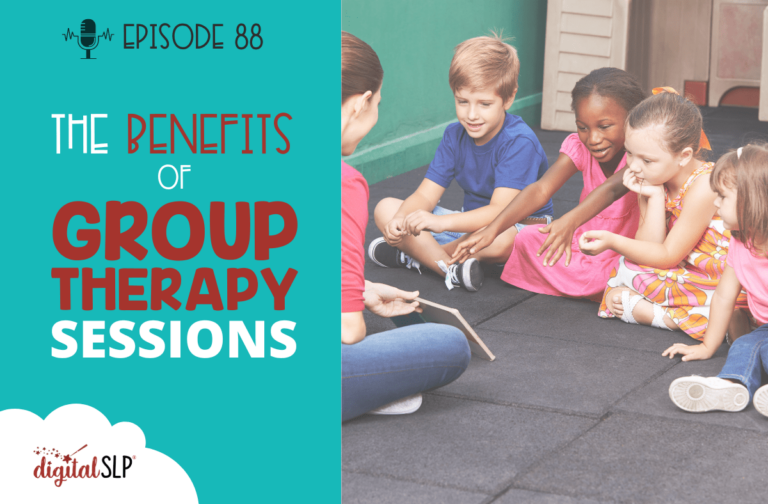



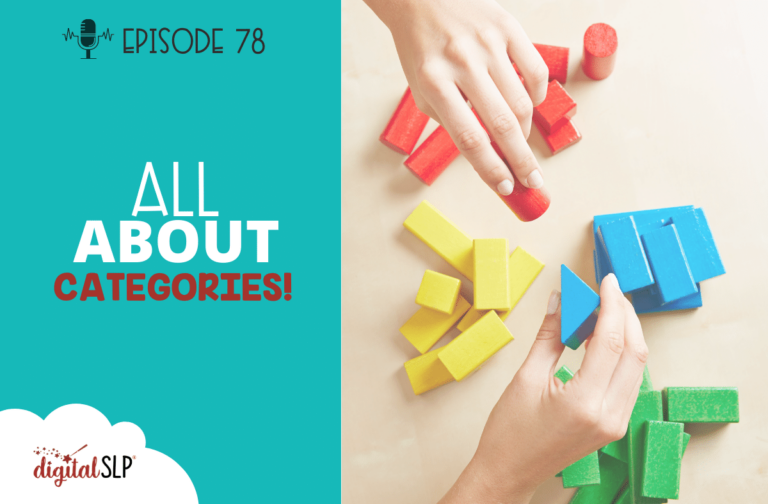
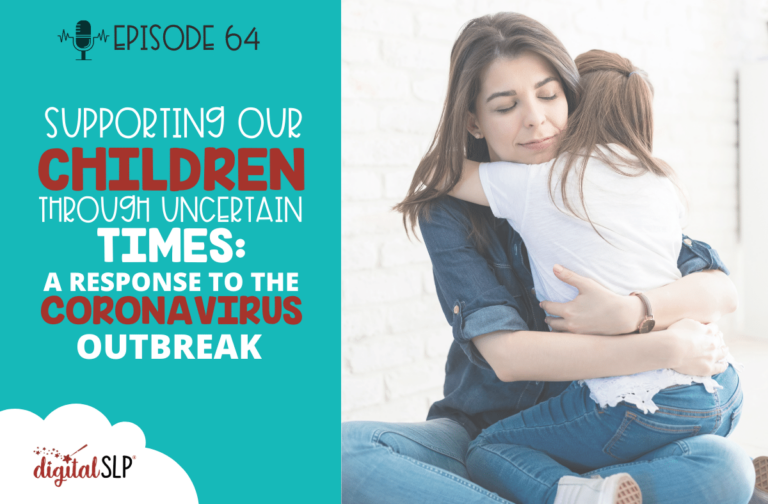
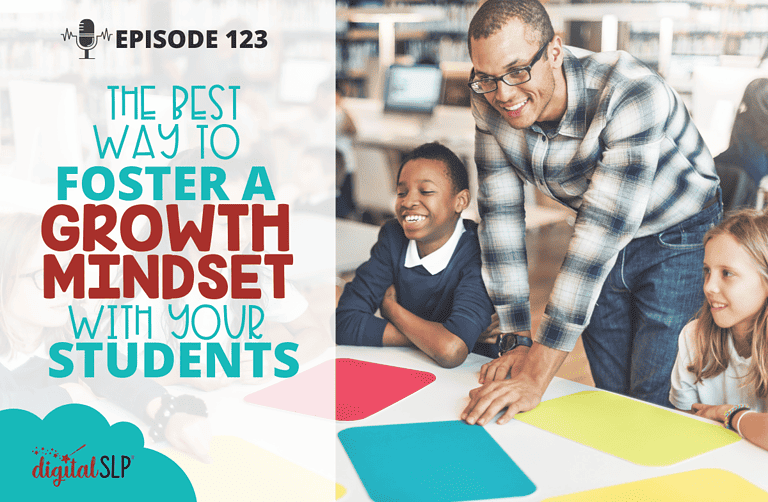
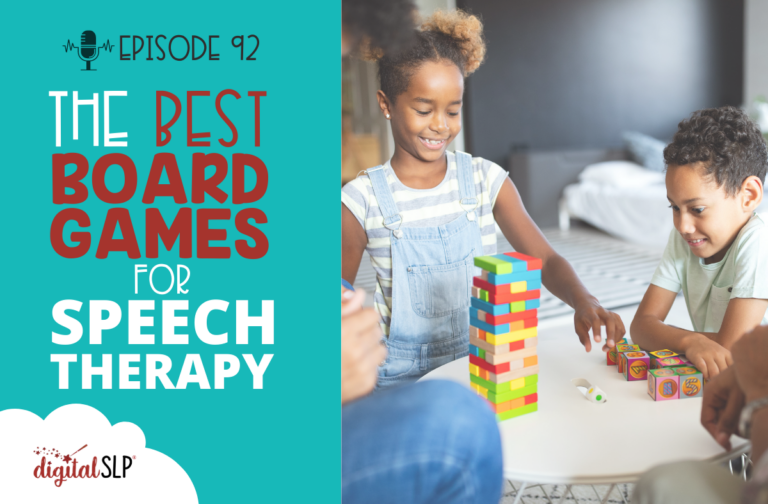
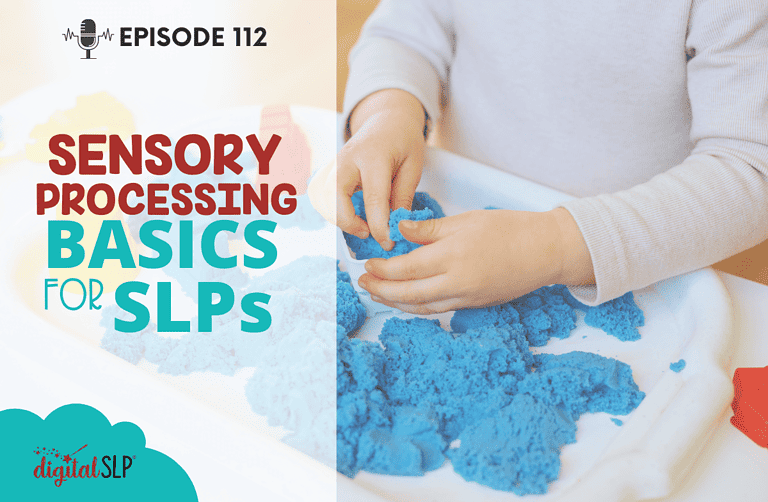
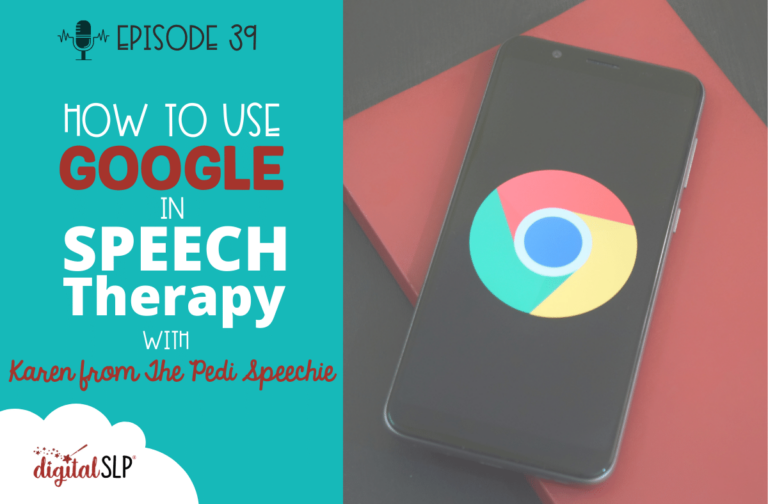

Recent Comments